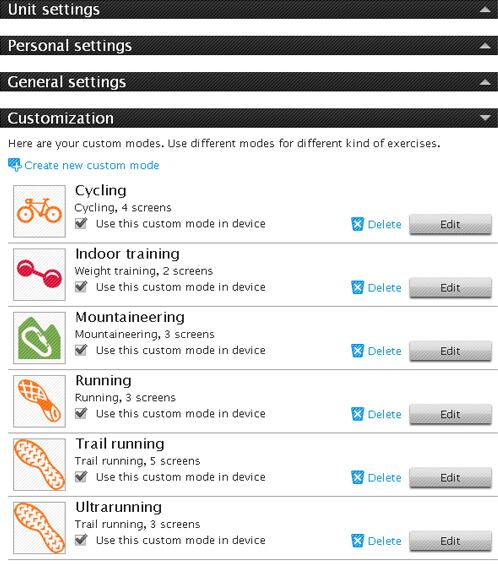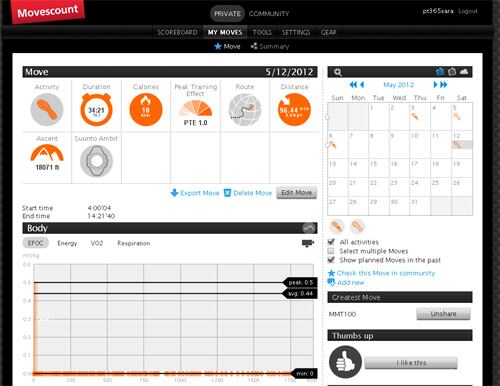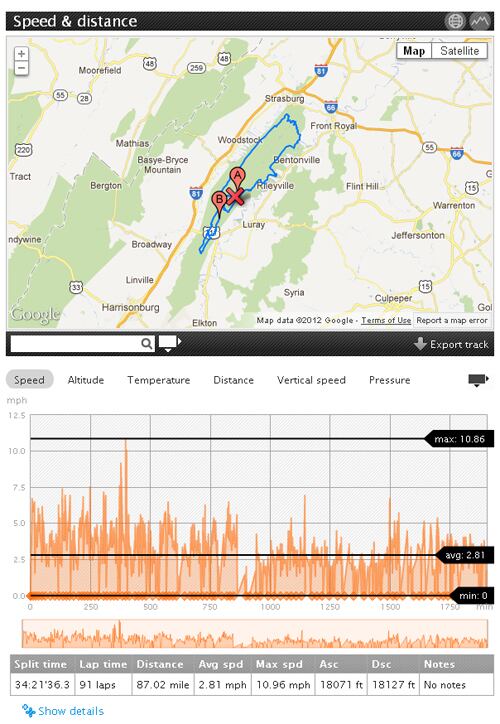[Tim pops up wearing a pair of night vision goggles] Donald Gennaro: Hey, where'd you find that? Tim: In a box under my seat. Donald Gennaro: Are they heavy? Tim: Yeah. Donald Gennaro: Then they're expensive, put 'em back.
These lines from "Jurassic Park" (and snatched from IMDB) came to mind immediately as I opened up the Suunto Ambit back in May. While the Ambit isn't technically heavy (2.75 ounces), it does have a certain heft to it that makes me think the opposite of cheap. (Spoiler alert: It's not cheap).
The whole kit is extremely polished -- the packaging rivals Apple -- with a designer's eye to detail that even my ugly beloved Garmin 310XT doesn't have. It's sleek, it's shiny and it works flawlessly.
My next thought?
Want.
Suunto sent us the Ambit for a very brief three weeks, but that was enough time to decide we really like it.
The biggest draw to the Ambit is its adjustable GPS cycle rate. You can choose -- on the company's Movescount online platform -- to leave the cycle rate at once per second or extend it to once per minute. Changing the setting to the longer cycle will extend the battery from 15 hours to a whopping 50 hours. This sounds great, in theory, but my runnerd friends and I were all curious about how badly this would affect the watch's accuracy.
Luckily PT365 fast kid gear tester Jimm -- a former Navy aviation electrician's mate third class -- had a 100-mile race during our Ambit honeymoon. Most GPS watches don't have enough battery life for the average mortal to complete 100 miles.
[Garmin's 310XT and 910XT get you up to 20 hours. Magellan's Switch series watches will both have up to 24 hours if you buy the battery extender accessory.]
Yes, if the course isn't too technical -- or if you are Mike Morton -- then you could run a 100 in under 20 hours. But Jimm's 100, the Massanutten Mountain Trail 100 in Virginia, is neither flat nor fast, and there was little to no chance -- sorry Jimm -- that he'd finished before his Garmin battery did.
Enter the Ambit. Fifty hours would be plenty of time (enough time to get you pulled from the course) to complete the race, if the battery really did last the promised 50 hours.
Jimm, like others in the race, had a rough day and spent far longer in the woods than he'd anticipated. He and the Ambit spent 34 hours and 40 minutes together that weekend, with the Ambit clocking 96.44 miles of the race's advertised 103.7 miles. Five miles off during a 100-miler is pretty close in my book. No watch is going to be dead-on during a trail run because of factors such as switchbacks and tree cover, but we were both surprised how well the Ambit did even with the 1/60 cycle rate. And the battery? Jimm still had at least 1/4 power left when he finished. I wore the Ambit for the rest of the day -- with the GPS on -- without battery issues.
Like I said above, you have to change the cycle rate preferences on Movescount.com, not on the watch itself. But there is a sneaky workaround to make it possible to change it on the watch. Just create a custom mode -- under the customization tab on your gear section of Movescout -- and set the cycle rate to once per minute. Check out the image below. I've set up one mode for road running, one for trail running (both at once a second) and one for ultrarunning at once per minute. Now you can toggle through cycle rates right on your watch. (This section is also where you can change your auto lap distance preferences, which took me forever to find.)

ambit_custom
GPS: "The integrated GPS used in watches such as Suunto Ambit is based on the SiRFstarIV technology," Suunto says on its product page. "The receiver has a very high sensitivity. This helps Ambit to find GPS satellites much quicker and get steadier readings."
Does it sync quickly? It certainly does. The very first time I used the Ambit I synced it from the car, while driving to meet friends for a run. I turned the GPS on when I hit a stoplight, and the Ambit was ready to go before the light turned green. It was consistently quick each time, though predictably slower at trail heads than in the city.
The accelerometer should help the watch's accuracy, and it was very consistent on road runs. To be sure it's accurate on the trail I'd have to steal a surveyor's wheel, so you'll have to take those distances with a grain of salt (tabs).
How does it work?
"The speed indication is a unique combination of GPS and acceleration sensor readings. The GPS signal is adaptively filtered based on acceleration, giving a more accurate reading at steady speeds and a quicker response to changes in speed," Suunto says.
Display: Ambit's display is big and bright and very easy to read, and surfing through data screens is a breeze.
Overall, this is a great watch; it's only real downside is its enormous price tag. I'd be all about buying this to replace my Garmin, if it were $100 cheaper.
Buy it at most major outdoors stores, or online at suunto.com for $550 with an HRM and $500 without.
Here are some bonus screens from Jimm's 100-miler:


Sara Davidson is an ultrarunner and our resident women's gear destroyer.





